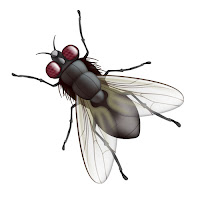According to Sebastian Horsley, Marc Bolan was super-plastic profound:
"A curious hybrid of dandy and poseur, street urchin and visionary. The mass of contradictions could be held together only by the unifying power of art. The only real philosophy he had was that a human being was an art form in itself. He was entirely his own creation: A creature lovingly constructed from the materials of his imagination. He was important for being trivial yet deep, poppy yet interesting - all the things I came to love in one person." [1]
However, whilst this loving description is undoutedly true, I have to admit that back in the day - i.e., the 1970s - I was never a great Bolan fan and when I stomped around the bedroom wearing my sister's platform boots, I was pretending to be a member of Sweet or Slade, not T. Rex.
As was also the case with David Bowie, I was just a little too young - and perhaps a little too straight - to fully appreciate the queer sophisticated pop genius of Bolan and his "gorgeously nonsensical and deliciouly fey lyrics" [2].
And so, although I remember listening to his songs on the radio and used to love watching him on TV, it was Gary Glitter's poster which hung on my wall and Gary Glitter's singles I used to buy with my pocket money at the local record store.
Only retrospectively, can I now see that I should've given my heart to this East London boy who, unlike many of his peers, embraced punk rock and was - again unlike many of his peers - embraced by the younger punk generation, as the photos above illustrate [3].
Whether Bolan genuinely loved the so-called New Wave, or simply wanted to ride along on it as he had once ridden a white swan in order to sustain his own career, I don't know. But I like to think this one-time hippie folk musician who became a glam superstar was more of a punk at heart than many might imagine [4].
Sadly, we never really got to find out, because Bolan was killed in a car crash on 16 September, 1977, aged 29.
Notes
[1] Sebastian Horsley, Dandy in the Underworld, (Sceptre, 2008), pp. 29-30.
Horsley borrows the title for his autobiography from the T. Rex single released 30 May 1977 (from the album of the same name released 11 March 1977 on EMI). Click here to enjoy a performance of this song on the children's TV show Get It Together, presented by Roy North (sans Basil Brush).
[2] Sebastian Horsley, Dandy in the Underworld, p. 27.
[3] There are also photos of Bolan with the Ramones and Billy Idol - and, speaking of the latter, Generation X performed their debut single, 'Your Generation', on the final episode of Bolan's own TV show Marc (broadcast 28 September 1977): click here.
[4] This is further evidenced by the fact that he chose the Damned to support him on a short tour in March 1977, which began at City Hall, Newcastle (10/03) and ended at the Locarno, Portsmouth (20/03), where the Damned joined Bolan and T. Rex on stage to perform 'Get It On' as an encore.
.jpg)
.jpg)
.jpg)



.jpg)


.jpg)
.jpg)

.JPG)
.JPG)
.JPG)



